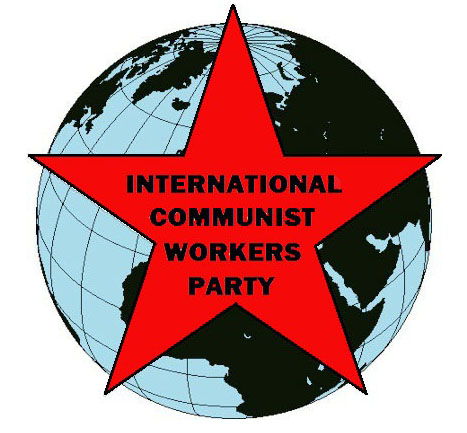
 |
FIGHT FOR COMMUNISM! |
International Communist Workers Party | |
The last article discussed the "January Storm," in 1967 in Shanghai, where a large workers' movement seized the local party headquarters and created the short-lived "Shanghai Commune."
The right-wingers in the Communist Party central committee reacted immediately to the power seizure in Shanghai and what it might mean about their power in the government. Zhang Chunqiao, Chen Boda and other Cultural Revolution (CR) leaders were called on the carpet in a leadership meeting in Beijing in early February.
People's Liberation Army (PLA) Marshal Ye Jianying, a senior party leader, was particularly outraged by the Shanghai Commune, since he knew that the Paris Commune had abolished the army. According to Mao Zedong's ground rules for the CR, the PLA was supposed to play a limited role. Mao responded to the uproar by ordering the Shanghai Commune to be replaced by a "three-in-one" Revolutionary Committee that included the army, "good" party leaders, and people from rebel organizations.

Mao ordered the PLA to support leftist rebels, but Marshal Ye OKed mass arrests of rebels by the PLA all over China. Hundreds were shot dead by the army and about one million were arrested in a campaign of repression later called the "February Counter-current."
A key incident of PLA repression took place in Wuhan in the spring and summer of 1967. In Wuhan, an industrial city in central China, rebel workers and students organized groups that totaled in the hundreds of thousands of members. They were headed by the Workers’ Headquarters, a large group led by steel workers. Unlike Shanghai, where there were many more rebel workers than defenders of the party leaders, the Workers Headquarters and their student allies were opposed by a much larger group.
That group was the "Million Heroes," organized with the help of the city government and PLA General Chen Zaidao, commander of the local military district. The Million Heroes members were government employees, party bureaucrats, militia and factory management, but also quite a few workers. In Wuhan and elsewhere, skilled workers tended to support the existing power structure, while contract and temporary workers, worker-students, unskilled workers, workers in small factories and apprentices typically supported the rebels. This is a clear example of how the wage system divides workers under socialism.
The Wuhan authorities banned the Workers Headquarters, which fought back with demonstrations and hunger strikes. They were violently attacked by the Million Heroes, which took over factories and neighborhoods. In May and June 1967, there were hundreds of violent clashes involving about 70,000 fighters. Hundreds died and thousands were injuring. On June 23 the headquarters of the Workers Headquarters was captured and 25 were killed. When Beijing learned that the rebels were about to be defeated, it ordered General Chen to prevent further attacks.
Beijing sent its representatives to Wuhan to resolve the crisis. These representatives said the army was in the wrong and demanded self-criticisms from commanders. When word spread of this, soldiers supporting the Million Heroes kidnapped Wang Li, one of the Beijing representatives and beat him up. Huge demonstrations across China repudiated the "Wuhan reactionaries" who did this. Threats from PLA troops loyal to Beijing forced General Chen to give in and go to Beijing. Now supported by some army units, rebel forces attacked the Million Heroes. Fighting lasted several months and killed about 600, with thousands of casualties.
In July, CR leader Jiang Qing (Mao's wife) called for rebels to be armed, to "defend with weapons and attack with words." The PLA did let rebels seize some arms, but provided better weapons to rightist organizations. The result was large-scale armed struggle in many places, without a clear winner.
By the end of 1967, "3-in-1 Revolutionary Committees" had been set up in most places. They were dominated by PLA officers, establishing a kind of military rule. The bright spot in this picture, however, was the spread of "ultraleft" ideas among workers and students. This development will be discussed in a future article.